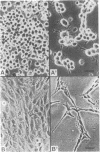Abstract
A protein has been isolated from bovine brains by using a modification of the procedure used to purify glia maturation factor. The method consists of ammonium sulfate precipitation, chromatography with DEAE-Sephacel, Sephadex G-75, and hydroxylapatite columns, passage through a heparin-Sepharose column, and finally fractionation by reverse-phase HPLC with a C4 column. The isolated protein reacts strongly with the mouse monoclonal antibody G2-09 and has a molecular weight of approximately 17,000 and an isoelectric point of pH 4.9. The N terminus is blocked, but tryptic digestion releases 28 peptides, 8 of which have been sequenced. The total known residues add up to more than two-thirds of the entire 140-residue protein, estimated from amino acid composition, and show no sequence homology with any known protein. Reversible thermal renaturation greatly enhances its biological activity. The purified protein stimulates differentiation of normal neurons as well as glial cells. It inhibits the proliferation of the N-18 neuroblastoma line and the C6 glioma line while promoting their phenotypic expression. We designate this protein glia maturation factor beta.
Full text
PDF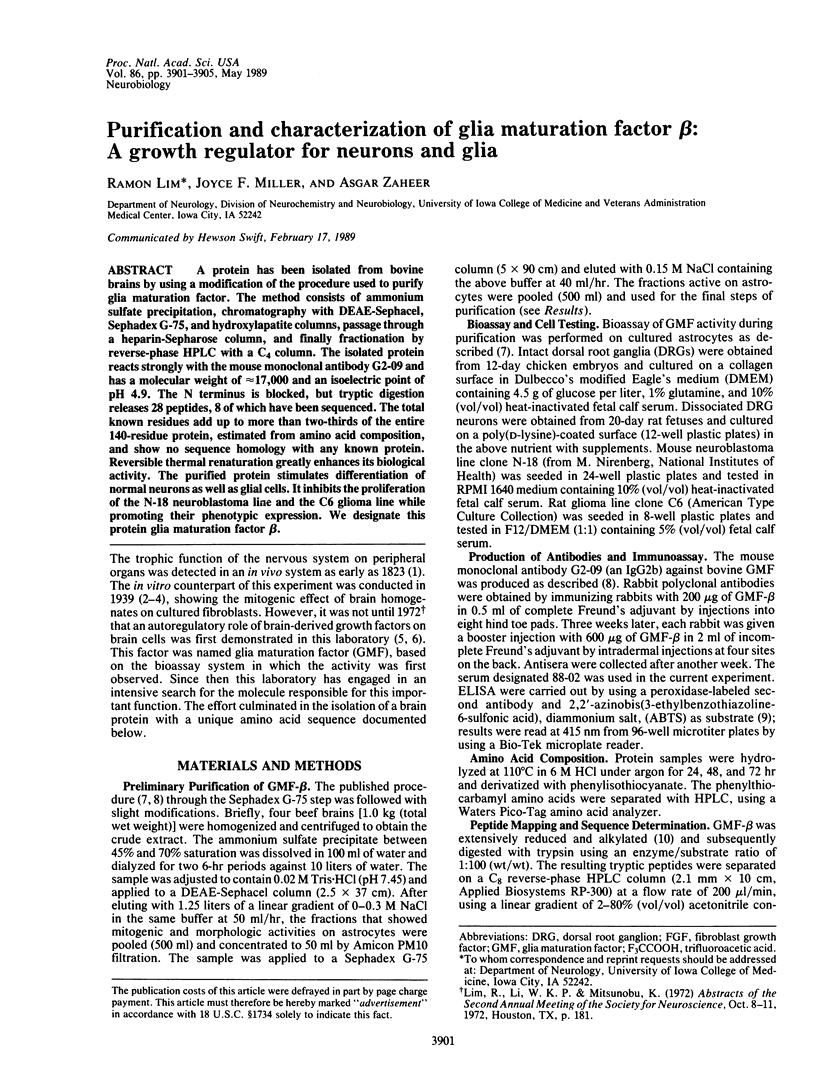
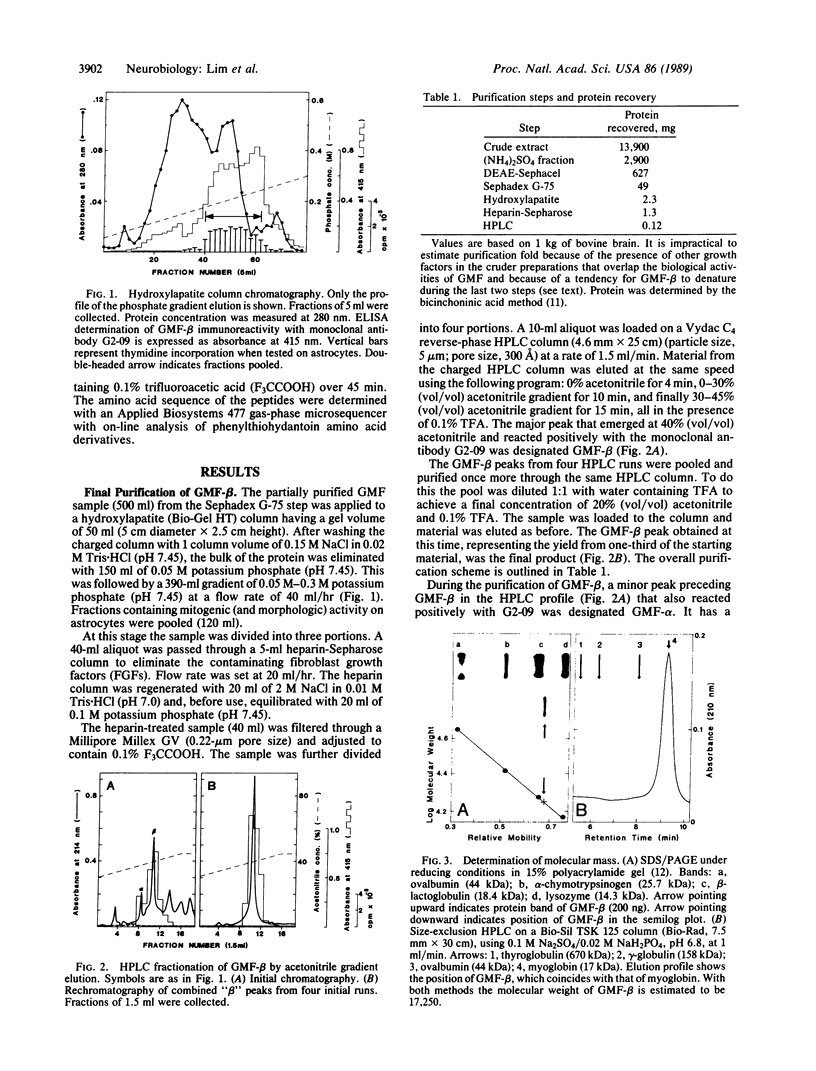
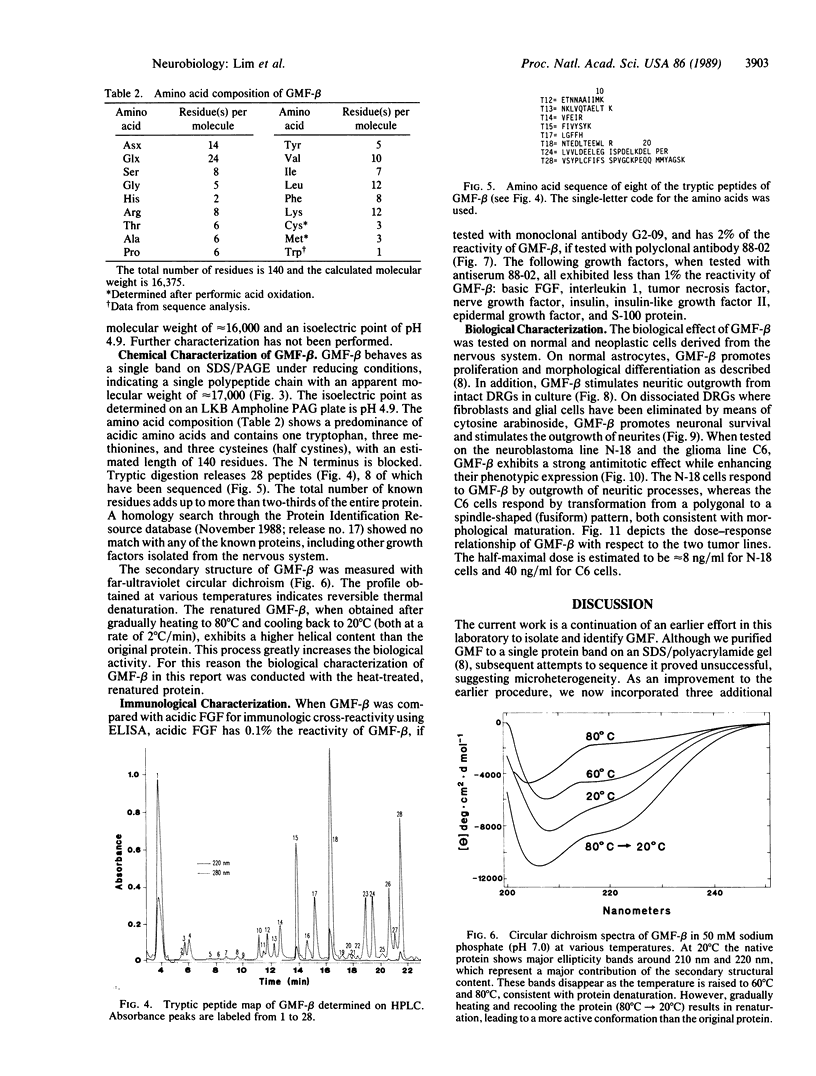

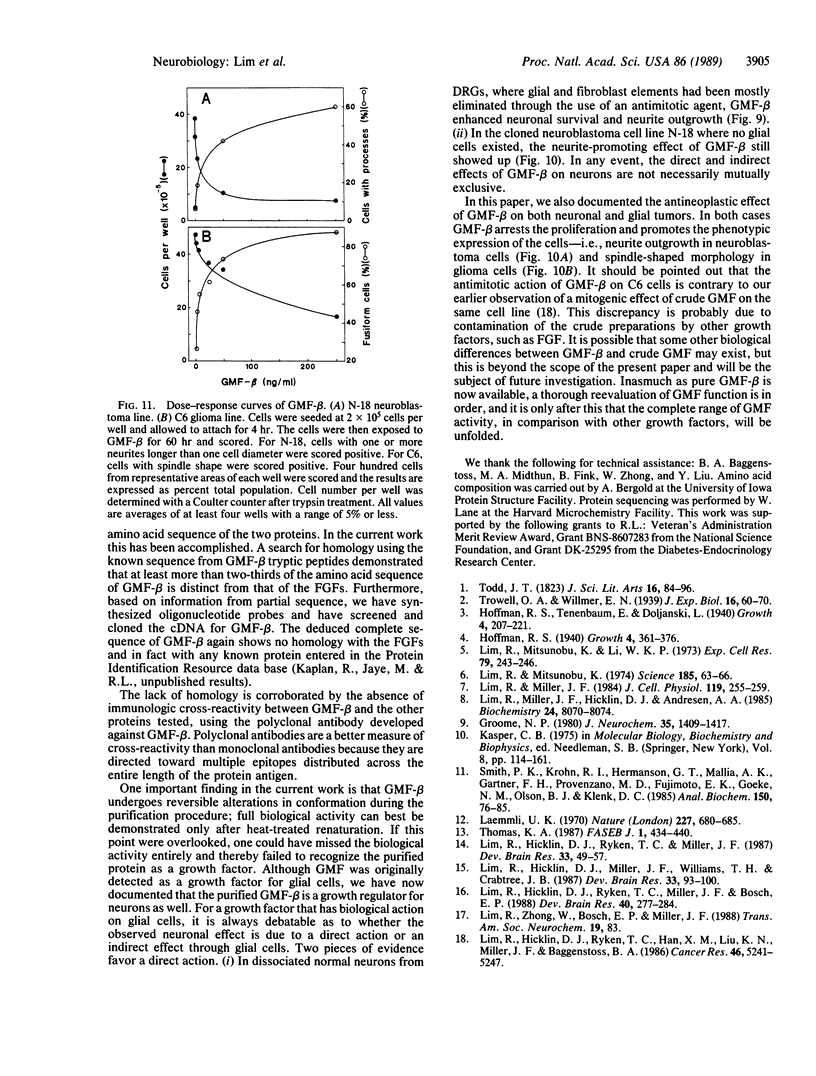
Images in this article
Selected References
These references are in PubMed. This may not be the complete list of references from this article.
- Groome N. P. Enzyme-linked immunoadsorbent assays for myelin basic protein and antibodies to myelin basic protein. J Neurochem. 1980 Dec;35(6):1409–1417. doi: 10.1111/j.1471-4159.1980.tb09017.x. [DOI] [PubMed] [Google Scholar]
- Laemmli U. K. Cleavage of structural proteins during the assembly of the head of bacteriophage T4. Nature. 1970 Aug 15;227(5259):680–685. doi: 10.1038/227680a0. [DOI] [PubMed] [Google Scholar]
- Lim R., Hicklin D. J., Miller J. F., Williams T. H., Crabtree J. B. Distribution of immunoreactive glia maturation factor-like molecule in organs and tissues. Brain Res. 1987 May;430(1):93–100. doi: 10.1016/0165-3806(87)90179-9. [DOI] [PubMed] [Google Scholar]
- Lim R., Hicklin D. J., Ryken T. C., Han X. M., Liu K. N., Miller J. F., Baggenstoss B. A. Suppression of glioma growth in vitro and in vivo by glia maturation factor. Cancer Res. 1986 Oct;46(10):5241–5247. [PubMed] [Google Scholar]
- Lim R., Hicklin D. J., Ryken T. C., Miller J. F., Bosch E. P. Endogenous immunoreactive glia maturation factor-like molecule in cultured rat Schwann cells. Brain Res. 1988 May 16;468(2):277–284. doi: 10.1016/0165-3806(88)90140-x. [DOI] [PubMed] [Google Scholar]
- Lim R., Hicklin D. J., Ryken T. C., Miller J. F. Endogenous immunoreactive glia maturation factor-like molecule in astrocytes and glioma cells. Brain Res. 1987 May;430(1):49–57. doi: 10.1016/0165-3806(87)90175-1. [DOI] [PubMed] [Google Scholar]
- Lim R., Miller J. F. An improved procedure for the isolation of glia maturation factor. J Cell Physiol. 1984 Jun;119(3):255–259. doi: 10.1002/jcp.1041190302. [DOI] [PubMed] [Google Scholar]
- Lim R., Miller J. F., Hicklin D. J., Andresen A. A. Purification of bovine glia maturation factor and characterization with monoclonal antibody. Biochemistry. 1985 Dec 31;24(27):8070–8074. doi: 10.1021/bi00348a035. [DOI] [PubMed] [Google Scholar]
- Lim R., Mitsunobu K. Brain cells in culture: morphological transformation by a protein. Science. 1974 Jul 5;185(4145):63–66. doi: 10.1126/science.185.4145.63. [DOI] [PubMed] [Google Scholar]
- Lim R., Mitsunobu K., Li W. K. Maturation-stimulating effect of brain extract and dibutyryl cyclic AMP on dissociated embryonic brain cells in culture. Exp Eye Res. 1973 Apr;79(1):243–246. [PubMed] [Google Scholar]
- Smith P. K., Krohn R. I., Hermanson G. T., Mallia A. K., Gartner F. H., Provenzano M. D., Fujimoto E. K., Goeke N. M., Olson B. J., Klenk D. C. Measurement of protein using bicinchoninic acid. Anal Biochem. 1985 Oct;150(1):76–85. doi: 10.1016/0003-2697(85)90442-7. [DOI] [PubMed] [Google Scholar]
- Thomas K. A. Fibroblast growth factors. FASEB J. 1987 Dec;1(6):434–440. doi: 10.1096/fasebj.1.6.3315806. [DOI] [PubMed] [Google Scholar]





